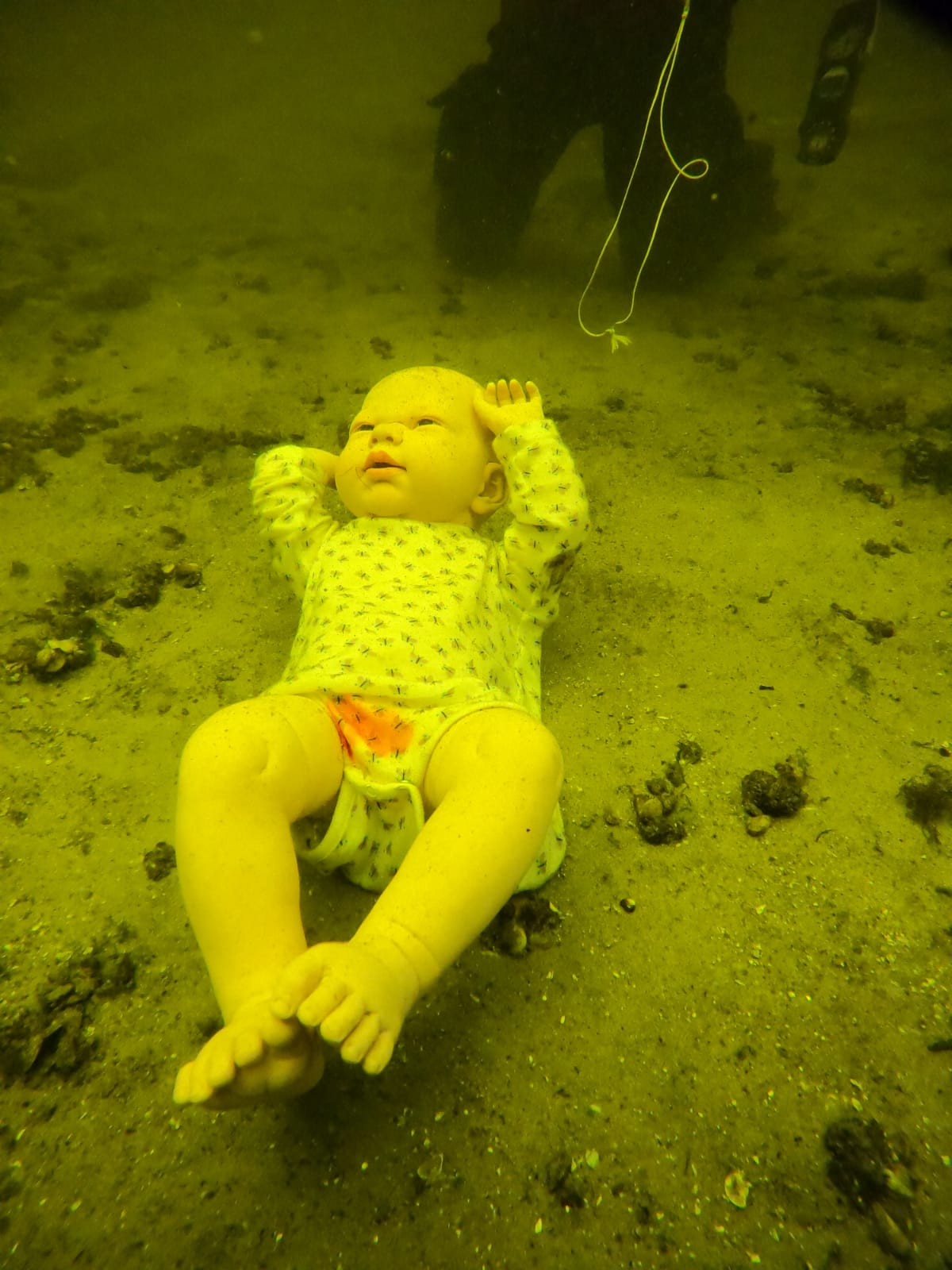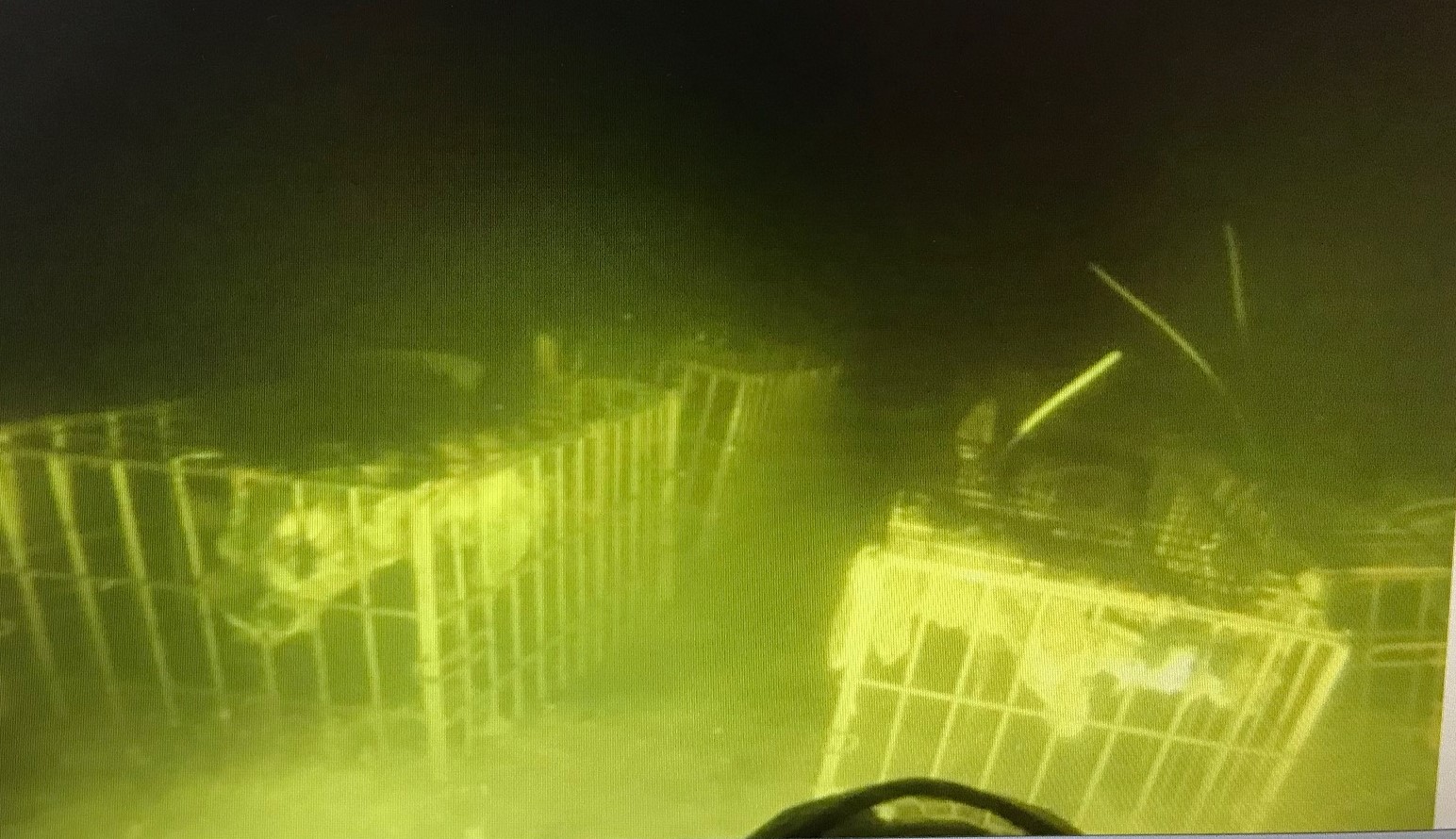Forensic Diving Academy
Underwater Crime Scene Investigation
Internship
Students from Universities can apply for an internship to attribute to the ongoing scientific research:
- the project for determining a scoring method for the post mortem submersion interval for babies and juveniles;
- the project on the effect of the post mortem submersion interval for babies and juveniles after been placed for three months in a freezer;
- the project on the effect of the post mortem submersion interval for babies and juveniles after been injured with a head shot.
Decomposition and faunal colonization of a carcass in the terrestrial environment has been well studied, but knowledge of decomposition in the marine environment is based almost on anecdotal reports (Haglund & Sorg 2002, Hobischak and Anderson 2002 Di Maio and Di Maio 1993, Teather 2013). The study of taphonomy relates to the reconstruction of ante- & postmortem events, forensic taphonomy (a sub discipline of multiple fields of expertise in legal medicine) uses this knowledge to give an indication about the circumstances surrounding death and an estimation of the Post Mortem Interval (PMI). Currently the estimation of the PMI in the Netherlands is solely done during the early post mortem period, by using Henssge's Nomogram and macroscopic changes like rigor and livor mortis. Once decomposition has advanced any suggestion about PMI is based on literature from foreign environments or on the "experience" of the forensic medical doctor or forensic anthropologist. Extrapolating the results from foreign environments most likely results in skewed estimates and thus, might not be suitable to apply to a specific environment like the Low Countries. Inaccurate estimates can lead the criminal investigation in to the wrong direction, resulting in a loss of valuable time and resources or to a miscarriage of justice. Therefore, taphonomic research is necessary on the advanced stages of decomposition of a human cadaver. Studying the stages that a cadaver goes through in different seasons, and with what duration, leads to a better understanding of decomposition, and might also lead to a predictive model for the later stages of decomposition.
These data will be valuable in forensic investigations involving submersed bodies, indicating types of water conditions to which the body has been exposed, indentifying post-mortem artifacts and providing realistic expectations for recovery of submersed bodies, and estimating the postmortem interval.
Decomposition
This study was developed in order to start an understanding of underwater body decomposition process and the factors that impact it. There is already done a lot of research on body decomposition on land, but for submersed bodies there is still a lot of unknown territory to explore (Haglund & Sorg 2002). Factors influencing the postmortem interval are the absence of gut bacteria, caused by deep frozening of the body, water temperature, salinity of fresh water, fauna and flora, and other environmental factors (Teather 2013). The research of decomposition in aqueous environments is challenging, but with well trained divers, and sophisticated equipment, more insight provided is in this complex subject. Although this study is restricted to only five pigs per season (total 40 pigs during the research), it still can make accurate generalizations about estimating the postmortem interval in aqueous environments. Further study will be necessary to provide more accurate evidence for the process of submerged body decomposition.
Decomposition starts within minutes after death. The general stages of decomposition that human remains go through are; fresh, bloated, active decay, advanced decay and skeletonization. During the fresh stage no signs of putrefaction will be noticed, the body will become stiff (rigor mortis), blood collects at the lower parts of the body due to gravity (livor mortis) and the body temperature will level out with the environment (algor mortis). Depending on the environmental temperature, the amount of sunlight, and the humidity, decomposition will be noticeable within several days. The first visible sign of decomposition is the bloated appearance of the human remains. Due to anaerobic bacteria, gasses pile up in the internal cavities, like the gastrointestinal tract. The toxins released by the anaerobic bacteria in the intestines have a negative effect on the integrity of the epithelium of the intestine. Eventually the bacteria reach the blood vessels and are able to travel through the capillaries, visually resulting in the marbling of the skin. Now the bacteria can feed upon all, already autolytic, tissues, like muscles, organs, and skin. Resulting in liquefaction of most of these tissues, this stage is called active decay. During the advanced decay tendons, ligaments, parts of dehydrated skin, adipose tissue, and cartilage will be broken down by aerobic bacteria, fungi but also environmental influences like rainfall, frost, wind, and sunlight. During this last phase of advanced decomposition the skeletal remains are exposed to these environmental influences, that is when diagenesis starts. The bone has the potential to become a fossil, depending on the soil and microorganisms within the area that it becomes deposited in. The above-described process is not so straightforward, multiple stages of decomposition can be witnessed at once within one body.



